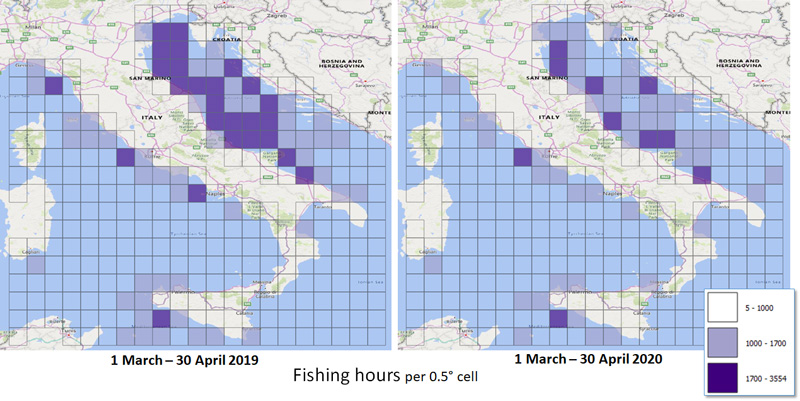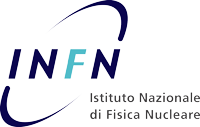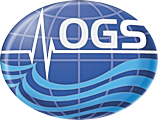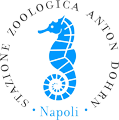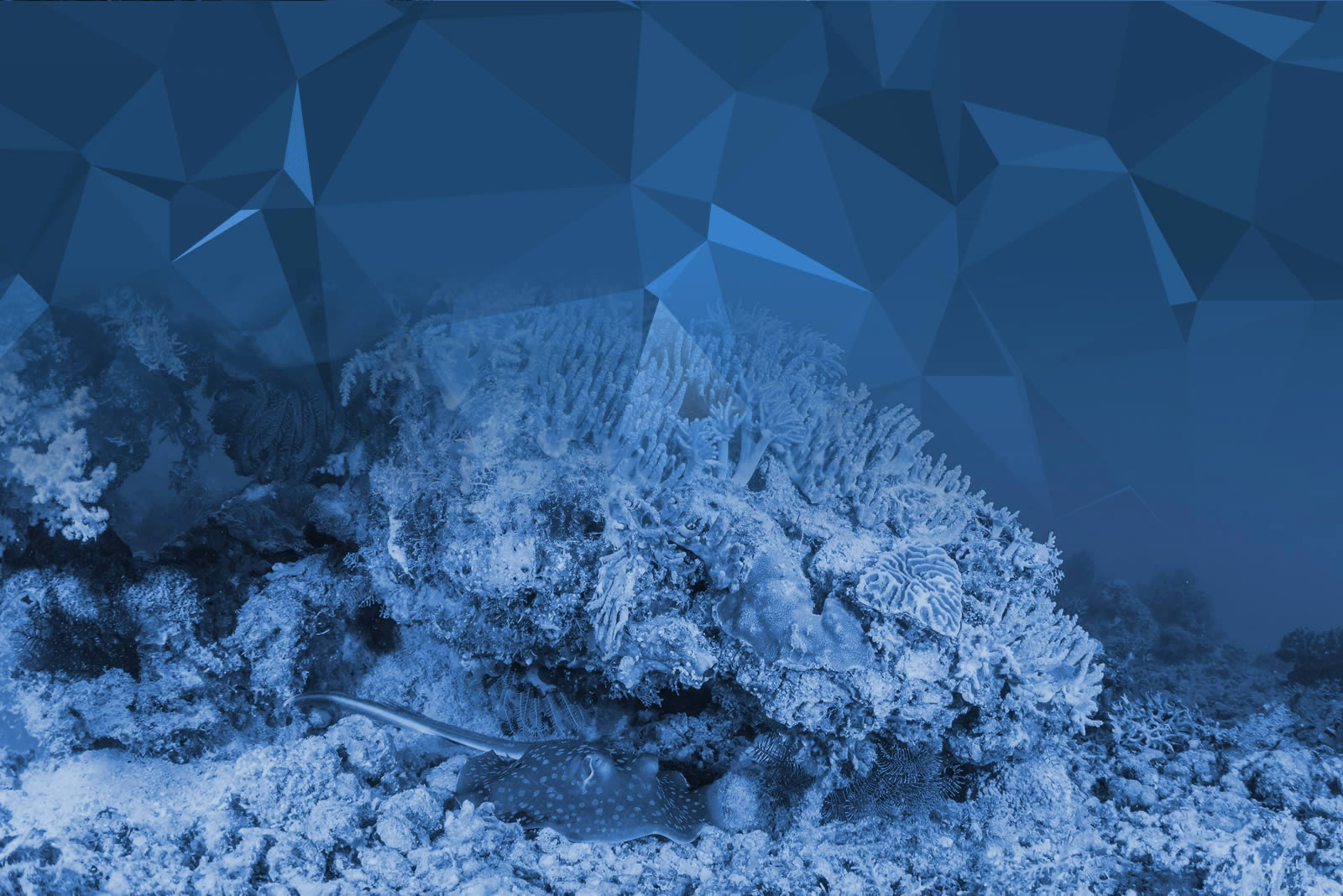
SNAPSHOT | Virtual Research Environment
Synoptic Assessment of Human Pressures on key Mediterranean Hot Spots
SNAPSHOT Project
On March 9th, 2020, to contain the spread of SARS-CoV-2 coronavirus infection, in Italy and, with a substantial simultaneity, in most of the other European Countries, all non-essential economic activities were stopped and the population was induced to stay indoors. For about two and a half months, all Countries have been forced into the grip of an unprecedented lockdown. A drastic limitation has been imposed on the movement of people, private and public transport and an almost total alt of air and maritime transport.
The adoption of lockdown, which took place with very short notice at a continental scale, represented an unprecedented experiment, unique in its kind, of a suspension or modulation of most pressures, as it resulted a significant reduction in many activities, both in industry and in services, with a parallel intensification of other activities to address the problems created by the pandemic (e.g. sanitary, food provision, etc.). The lockdown produced a significant and transitory modulation or decrease of the anthropogenic impact on the environment, including the marine coastal systems, where this was most relevant before the lockdown. To assess the possible effects of the lockdown and the extent of its induced modifications is a crucial task, offering the opportunity to tentatively provide a snapshot ofthe response of the marine ecosystems to pressure release and to generate useful indications for future sustainable and effective management of the environment. Indeed, the pandemic has demonstrated the relevance of the holistic ecological concept of "One Health", underlining the close, vital and unbreakable bond between the health of humans, of other species and of the environment.
The scientific challenge of this project is therefore to recognize and diagnose the effects of the lockdown, at different temporal and spatial scales and to promote collective actions that allow to consider new social knowledge and practices, depicting a possible future in which the respect for the environment can be reconciled with human activities and wellbeing.
The main objectives of the project are:
To verify and to characterize: (i) the extent of the reduction of anthropic activities during the lockdown; (ii) any incremental changes to these anthropogenic activities in the post-lockdown recovery phases;
To verify, to quantify, and to diagnose the possible effects on the marine and coastal environment, driven by the (i) reduction of anthropic activities during the lockdown and (ii) resumption of productive activities, in the context of the spatial-temporal variability of natural phenomena;
To reinforce the link between Natural and Social Sciences and to explore the possibility to integrate scientific with local knowledge.
The feasibility of the objectives is based on the following working hypotheses:
a. The reduction and successive progressive recovery of maritime traffic represent a disturbance of the soundscape with observable variations in the responses of several marine organisms.
b. The variations of the flows of matter towards the sea altered the dynamics of the coastal pelagic communities, and this dynamic needs to be characterized.
c. The reduction of fishing effort affected the recruitment in relation to the phase of the production cycle of the species of interest with consequences on the functioning of the food web.
The main result expected from SNAPSHOT is a quantitative and robust estimate of the relationship between anthropic activity and resilience of the coastal marine ecosystem in terms of hysteresis of the system after a temporary reduction of the impact.
It will be also possible to (i) verify the effect of noise pollution on various species of marine organisms and, in the short and medium term, the reduction of fishing effort on the dynamics of the stocks of some species of food interest, (ii) estimate the degree of plasticity of the pelagic food web, especially the microbial one, to the variation of quality and quantity of the coastal flows of organic matter, nutrients and contaminants. The effects of the lockdown will be framed in the context of the variability of marine and coastal biogeochemical parameters, associated with climate change and, more generally, with global change.
A number of key areas have been selected for data acquisition and experimental investigations. A fundamental characteristic of the chosen study areas is their ecological significance combined with the availability of previous data, including those of the long-term ecological research network LTER-Italy. Taking into account the average flow of the last 19 years (2000-2019) of all rivers that flow into the Mediterranean Sea, 5 have a flow rate greater than 300 m3 sec-1, including the Po, 10 have an average flow (150-300 m3 sec-1), including the Tiber, and 87 have a flow rate lower than 150 m3 sec-1, including the Arno (86 m3 sec-1) and Sarno (13 m3 sec-1). The latter is also considered one of the most polluted rivers in Europe, due to legal and illegal discharges from numerous leather processing plants. Some areas, considered strategic for the objectives of the project, have therefore been identified: Venice and its lagoon, the delta of the Po river, Ancona, Genoa, Pisa, the Arno and Tiber river deltas, , the Gulf of Naples, the estuary of the Sarno river, the Gulf of Taranto and the Gulf of Palermo. Sampling strategies will be defined to assure continuity and comparability with data acquired in the past. In particular, physical (temperature, salinity, density, suspended matter), chemical (nutrients, dissolved organic matter, isotopes of particulate organic Carbon, heavy metals, organic contaminants) and biological (chlorophyll, faecal contaminants, bacteria, phyto and zoo plankton) parameters will be measured. Preliminary sampling was made one and four weeks after the end of the lockdown and will proceed at 3, 6 and 12 months after the end of the event. The project also aims at grasping the socio-economic effects of the lockdown, in order to identify the main variables to be correlated to the observed impacts and to provide a reference on which to build policies to support new production models in line with the main European strategies. Moreover, specific actions will be devoted to investigate the citizens’ and researchers’ perceived impact on life and work, with the aim of building participative processes to depict shared visions of desirable future scenarios that will be integrated in the overall SNAPSHOT impact assessment. The analysis will be developed starting from the areas covered by the experimental surveys through a multi-stakeholder systemic analysis to define the main aspects to be crossed with the environmental parameters. The analysis will include previous and recent data. The collected data will be published openly and in standard formats according to the principles of findability, accessibility, interoperability, and reusability (FAIR).
